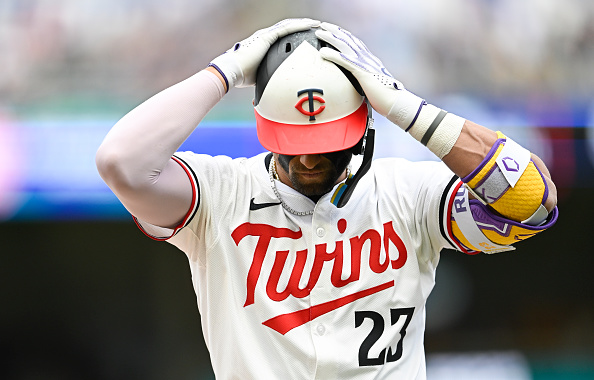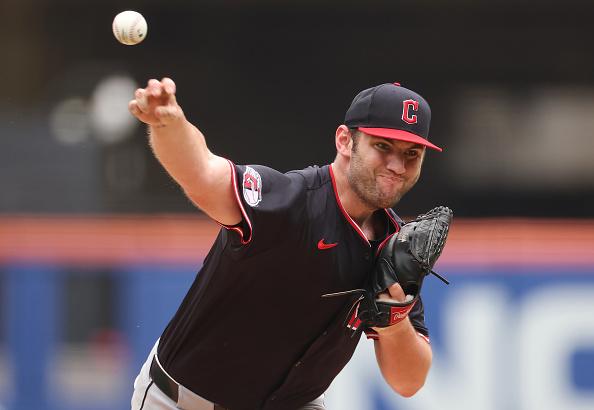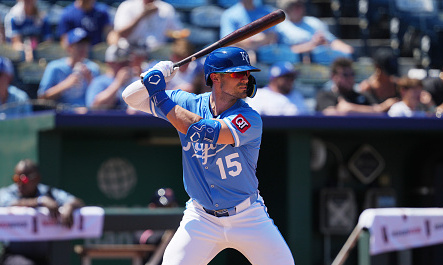Joey Ricotta | July 30th, 2019
This is the time of year where a big trade can do one of a few different things, depending on how you’re looking at it. If you’re a contender, the right trade could propel you over the top to reach the ultimate goal of winning a World Series. Buyer beware, the wrong trade could also set your franchise back tremendously for years to come.
If the players you trade for don’t pan out or produce for your team the same way they were producing, it stings. It stings, even more, when the top prospects traded away to acquire said player become absolute monsters at the major league level. Team executives certainly don’t like watching players they drafted tear it up for other teams. Especially if the player or players traded for didn’t work.
There are risks involved for the selling teams as well, but because generally what they have at the moment isn’t working, they can afford to take a little risk as they are only concerned with the future. A lot of times prospects that were traded for don’t turn into All-Stars. But at the very least, the selling team will be dumping money that will open them up to make further additions in the off-season. This season will be very interesting to see what teams do because there is only one trade deadline. Meaning general managers and team executives will have tough decisions to make. In the past, they could make a minor trade or two, take a wait and see approach for a couple of weeks, and make more moves before the August 31st waiver trade deadline.
There are other aspects to the deadline which creates the questions of whether or not a team is a buyer or seller. How does the franchise view themselves currently? Do they really understand where they are and what direction they are heading? Is there anything that could cause confusion as to where they are currently?
The answer to the first couple of questions are up for interpretation, but the answer to the last question is yes. The team on the field as currently constructed causes the confusion. This season, it’s teams like the San Francisco Giants. After falling to a season-low 12 games under .500 on June 29, the Giants have gone 19-5 and now sit only 2.5 games back of a wild card spot. They are still 14.5 games back of the NL West-leading Los Angeles Dodgers, but they are within striking distance of the playoffs.
With Bruce Bochy managing his final season, the Giants would love to make one final run with him at the helm. Going into the season, no one, maybe not even the Giants themselves, pegged them to be realistic contenders this season. Instead, it was almost a foregone conclusion that the Giants would be sellers at the deadline. Madison Bumgarner is on the final year of a five-year $35 million contract. Bumgarner and relief pitcher Will Smith have been the top Giants rumored to be on the trade block. The most recent rumors have said the Giants are unlikely to deal Bumgarner or Smith, and an extension with Bumgarner is not out of the question.
The problem with this? The Giants have one of the worst run differentials of any contending team at minus 45 runs. Their roster isn’t made to compete. They are playing over their heads right now. This is probably the hottest they will be all year and when it comes down to it, they, more than likely, won’t be able to compete with teams like the Dodgers, Braves, Nationals, or Cubs. The other issue is by going for it or staying put, they won’t capitalize on being able to acquire some serious talent for the near future. Because Bumgarner and Smith are both unrestricted free agents at season’s end, the Giants would be wise to get something for them while they can.
We can look back to 2016 for example. The New York Yankees traded soon to be free agent Aroldis Chapman for Gleyber Torres. There were other prospects in the deal, but he is obviously the one player that has already panned out very nicely. Then prior to the 2017 season, the Yankees brought back the free-agent Chapman. Basically, they lost half a season of Chapman’s services to get one of the best prospects in the game. The Giants can do the same with Bumgarner or Smith if they choose to, although it sounds like they might go the sentimental route instead. I’m all for teams going for it and competing, but I don’t know in this case. Bruce Bochy will go down as one of the best managers of all-time. Both Bochy and Bumgarner have certainly given a lot to the Bay Area that will never be forgotten. But should the Giants risk jump-starting a rebuild for a coin toss wild card playoff game that they may or may not make it to because of their legacies?
For more examples of teams making mistakes at the deadline, just look back at the Chris Archer trade from a year ago. The Tampa Bay Rays basically stole Austin Meadows, Tyler Glasnow, and Shane Baz from the Pittsburgh Pirates because they thought they had a realistic chance of competing after a good month of July. The Pirates went 17-9 in July to pull within six games of the division and three games back of the second wild-card spot. Their run differential was actually positive at that point in the season at plus five runs. But there was the same number of teams ahead of them in the wild card race as the Giants trail this year, four. Technically, it’s five, but one of those teams will win the NL Central.
To this point, the big splash of this year’s trade deadline was the deal between the New York Mets and the Toronto Blue Jays. A deal that sent Marcus Stroman to the Mets in exchange for prospect arms Anthony Kay and Simeon Woods Richardson.
A puzzling move to say the least, but one I will refrain from judging fully. Did the Blue Jays get all they could’ve for Stroman?
Are the Mets really going for it this year or is this the first of a series of moves to set the landscape for the future?
The Mets are six games back from a wild card spot and 11 games back in the NL East. In order to win a wild card birth, the Mets will have to leapfrog five teams. It’s also worth noting that the San Diego Padres, Cincinnati Reds, and Colorado Rockies are all within one game or less of the Mets.
I’m not giving an opinion on the trade until we see what other moves the Blue Jays and Mets make before the Wednesday deadline. We’ll find out if the Blue Jays got all they could for Stroman when some other big names get moved. And while the Mets may have acquired Stroman for a wasted 2019 effort, they will have him for 2020, barring any other trades.
So, the question remains. Do you go for it or not? Exactly the types of conundrums the MLB was hoping for when they added the second wild card team in each league ahead of the 2012 season. They wanted more teams going for it, year in and year out, and fewer teams tanking to get better draft picks. There is another issue with teams flat out tanking, but we will address that issue with a separate article.
Check out our other State of Baseball articles: Free Agency
Questions and comments?
thescorecrowsports@gmail.com
Follow Us on Twitter @thescorecrow
Follow Us on Reddit at u/TheScorecrow
Follow Us on Facebook at The Scorecrow
Follow Us on Instagram at The Scorecrow
Facebook Group where you can read and post articles at The Scorecrow
Reddit Group where everyone can post without fear of being banned at The Scorecrow
Follow Joey Ricotta on Twitter @theriot326
Main Credit Image: [getty src=”1164233665″ width=”594″ height=”401″ tld=”com”]






